EPISODE TRANSCRIPTION:
Paul Tyler:
Cyrus Bamji and Colin Devine from The Alliance for Lifetime Income, join us today to talk about a number of pressing topics in retirement. We cover the 4% rule and whether it should be 3%, Colin talks about the uniquely high risk that market downturns present for women. And of course, we examine the value that lifetime income creates for all Americans. And by the way, if you didn’t know it, The Alliance was the sole sponsor for the last two years for The Rolling Stone’s US tour.
Intro:
Welcome to That Annuity Show, the podcast that will make you an expert in explaining annuities to your clients. Give us 30 minutes each week and we’ll shave hours from your client presentations. Now here’s your host, Paul Tyler.
Paul Tyler:
Hi, this is Paul Tyler, and welcome to another episode of That Annuity Show. And Ramsey, good morning.
Ramsey Smith:
Good morning.
Paul Tyler:
Hey, and we have two terrific guests lined up for this show. Do you want to do the honors and introduce them?
Ramsey Smith:
I would be happy to do so. So today we are joined by two distinguished guests from The Alliance for Lifetime Income. And we’ll call The Alliance like our brothers in arms. This is great, we have the whole all-star team together today to have this discussion. We’re joined by Cyrus Bamji, who is the head of communications for The Alliance. As well as Colin Devine, who’s one of The Alliance’s key research Fellows. And we’re looking forward to having a great conversation today about one, the goals of The Alliance, and two, some of the terrific research that comes out of there. And it’s been headed up by Colin and his colleagues. So with that Cyrus, why don’t we start with you. Tell us about the mission of The Alliance, how it got started and how things have progressed since those early beginnings.
Cyrus Bamji:
Sure. And thanks for having us both on the show over here. So The Alliance was created about three years ago, it’s a non-profit consumer education organization. And it has really one sole purpose and that is to educate Americans about the importance of protected lifetime income from annuities, in the simplest way put. We have about 22 members who are some of the biggest annuity companies and asset management firms in the industry. And from the first day that we established The Alliance about three years ago, as I mentioned, we also established this really kind of bold vision for the member companies and for ourselves. And that is a country where no American has to face the prospect of running out of money in retirement. And we firmly believe in that and follow that kind of vision every day, actually. So four fundamental goals that The Alliance has.
Cyrus Bamji:
Number one, educating consumers on the various risks that they face in outliving their savings. Number two, shifting people’s thinking, and the whole retirement planning conversation that financial advisors have with their clients, from focusing solely on accumulating savings, to protected income and planning for retirement income. And that’s a fundamental shift that really needs to happen in the retirement planning industry overall, as you probably well know. Number three, and it’s a really important one, demystifying and countering some of the misinformation about annuities out in the marketplace.
Cyrus Bamji:
For decades, this stuff has been out there. People don’t understand, too complex, too hard to understand, heard its bad, high fees, all these different issues, and questions. So we kind of counter some of that, both in the media and the industry broadly with facts, simplicity. And then really importantly, and it sounds kind of pedantic as I like to call it, but really decomplexify the language that we use to describe annuities. Because we in the industry always tend to levitate to both acronyms and some of the other very difficult things that people, certainly clients can’t understand.
Cyrus Bamji:
And finally, number four. Helping advisors understand if they’re truly looking out for the best interests of their clients, if they truly are, then they should be considering including protected income from annuities in any truly diversified portfolio. So that’s really the four kinds of goals that The Alliance has. One final point I’ll say, last year we launched the Retirement Income Institute, which is comprised of some of the leading scholars in retirement and economic scholars in the US. It’s headed up by a gentleman by the name of Jason Fichtner, who is a former acting deputy commissioner of the Social Security Administration actually. He was also chief economist for retirement policy there. Long-standing leader in the industry. We set up this Institute, people ask, “Well, just another retirement Institute out there.” We set it up to be a little unique or different and unique from all the other academic think tanks out there.
Cyrus Bamji:
And we do this by combining academia with the business for the first time. And we’re marrying scholarly research that’s being done and has been done for decades, as we all know by some great thinkers out there with real-world data and the practical experience of the industry and the businesses out there that are working in this place to create some of this research that’s really, I like to call it actionable. Policymakers, the businesses themselves, consumers can actually take this information and do something with it versus sitting on a shelf as proposals and plans and so on and so forth. So that’s long-running diatribe over here about The Alliance, but that’s what we do.
Ramsey Smith:
Thank you. So Colin, tell us about some of the work you’re doing as a research fellow.
Paul Tyler:
Oh, Colin you’re on mute.
Colin Devine:
I think we’ve all done that. It’s like, you’ve got mail, now you’re on mute. I apologize.
Paul Tyler:
Exactly.
Colin Devine:
Anyway. So first off in the interest of full disclosure, I actually own eight variable annuities. And I was a former Walls Street analyst before I met up with The Alliance and I covered these products for a long time. And I actually thought they offered tremendous value despite some of the confusion out there. And as Cyrus said, with annuities, everybody understands what life insurance is. Annuities are just the other side of the coin. And they might be better characterized as longevity insurance. And so Ramsey, what I started to look at was what are some of the risk people face as they get older? And there’s a couple. One, you don’t know how long you’re going to live.
Colin Devine:
Two, you don’t know how healthy you’re going to be. And three, you don’t know what markets are going to do. And when I dial all those together, in a world where we don’t have a defined benefit plan like our grandparents did, then the risk that we all face, rising longevity. Then the risk of running out of money, and as I say, throw in health, almost becomes a near certainty for most people. Again, unless you’re fortunate enough to be one of the few who has a defined benefit pension plan, that’s indexed. If you do, you’re probably in great shape, but that’s not very many of us.
Ramsey Smith:
So tell us a little bit about the work you’ve done to kind of scaffold those themes for people. Well, there’s a well known risks, I should say, to those that have done the work. And so there’s two things. One is to let consumers know that this risk is there. And two to help them understand the depth of it and three to help them figure out how to address it. So what’s some of the work you’ve done to accomplish that?
Colin Devine:
Sure. So what we did, and we did this in conjunction with Milliman. So it’s actually really based… Ken Mungan, the chairman of Milliman worked on this paper with me. And what we tried to look at is what is that risk? Again, marrying in your actual longevity, mortality. And the one thing that we did was a little different, because there’s lots of these projections out there and all these… you can go to all kinds of websites. That’s all nice. We introduced one thing. We said, what happens if you have a 20% market correction in the first 10 years of retirement? A lot of advisors know how your portfolio’s going to do in accumulation is based on those last 10 years.
Colin Devine:
It’s a double edged sword. How are you going to do in retirement? A lot’s going to depend on the first 10 years. So what we looked at is what if that happens? What do you think the risk of that is? Yeah. I’d probably go 100%, but everybody’s got their own view, especially after the last year. But we looked at 20% drop, what if that happens? Markets could come back randomly. The Milliman’s got the big sarcastic generator, but we just introduced that one thing. What does it mean? And what it means is actually pretty shocking and the implications, both for individuals, but I would even distinguish it men versus women. On average, gentlemen, you live to 65, we’re all going to go another 19 years. And if I asked the four people on this podcast who can beat that average? Everybody’s hand goes up too.
Colin Devine:
Okay. So we all know we think we can beat the average. All right. And a woman’s going to go 22 years. So let’s take a simple, a very conservative investment portfolio. The 4% withdrawal rule, which by the way, came from the ’90s, when rates were about 500 points higher than they are today. It’s like retirement, the idea of 65 came from the ’30s when the average male lived to be 62, not 79. But we looked at that. If you took a 60, 40 mix… again, I think what I’ll go very conservative, a 4% withdrawal rate. If you get that 20% market correction in those first 10 years, what does it mean?
Colin Devine:
What it means? Tell you what. There’s 11% chance gents that you’re going to be out of money by year 19, so the average. And again, all three of you nodded your head you can beat the average. That’s it. That’s 11% chance. But for the ladies, going the extra three years, that risk doubles to almost 20%.
Paul Tyler:
Wow. Interesting.
Colin Devine:
And think about that. That risk for a woman then of running out of income in retirement… and I don’t think a lot of advisors thought about this, is really double what it is for a man. And I don’t know about you. I always think of my mom as a proxy for everything I do, her risk tolerance, I think basically reflects everything. There’s no chance she’s taking a 20% risk of running out of money. I’m not sure she’d take two. I know 20, not a chance.
Paul Tyler:
Right.
Colin Devine:
That’s what we [crosstalk 00:12:08].
Paul Tyler:
Yeah. So Colin, first off, my wife is planning for an early demise on my part. All the life insurance is all in order. Ramsey, we’ve got all the… She’s not leaving anything to chance here. So Colin, fascinating. When you actually put numbers to that and think of the risk confronted by a woman versus a man, I don’t think people have really… that hasn’t resonated. You also made a real interesting comment about the time lag. It’s almost like we’re sending radio signals… our retirement planning is based on radio signals sent from Alpha Centauri and we’re, “Oh, take out 4%. Oh, whoops. No, bad decision.”
Paul Tyler:
Think going forward, interest rates have come way… as you know, they’ve crashed and they’ve started to come up. Good news is they’ve come up. The bad news from what I’ve seen is the spreads have actually compressed if you try to take any kind of credit risk. Wow. So I put 40% in bonds. What are those things going to yield? 60% in the market, well, all the growth seems to be coming from tech sector, everything else, it’s not. How does this factor into this whole crazy market from a carrier perspective? What product do we build given this new, crazy market that we’re in?
Colin Devine:
Well, it’s where annuities come in, because the part that gets lost with annuities beyond the returns, is the benefit of mortality pooling. By the way, that’s the same thing we’re all buying on life insurance. Most of us aren’t going to die young. So for most of us life insurance is a really bad deal. Except if it’s not and you do die young, then it’s a great deal and it protects your family. This is the other side of that. And that’s switch beyond the returns, what they can get on the bond market, it’s a benefit of mortality pool. It’s what if I do live long? Which again, everybody… and again, not only that, of course, when you think about the value of annuity and protected lifetime income, it’s how healthy are you going to be?
Colin Devine:
It’s something else. I don’t be Dr. Doom here, but the sad part is that about half Americans age 65 are going to face some form… which again, probably truly makes sense, sort of major health impairment that will trigger a long term care need over the remainder of their life. What’s the leading cause of personal bankruptcies? Medical. So they’re running out of money. So you can even think you have enough until you hit that healthcare blip. And again, I only gave you average numbers. The standard deviation on that is 10 years. So what if we went 25 years, to 60, 40? Again, that conservative is there’s about a 30% chance of running out of money. By the way, if we went to 80, 20, just Jack up the equities because we don’t like fixed income, it doesn’t change it very much. That’s not going to help you. So how do I beat that? I beat it with mortality pooling.
Ramsey Smith:
So you brought up a really good point there that it’s not just about the average, it’s about the dispersion or variability around that average. And that makes a very big difference. So if everybody lived to the exact average, it’ll be a much different problem than with the same average, but much greater dispersion. So let’s build on that a little bit because that’s a very, very important point. So the average person might do well, but if half the people are better off and half the people are worse off, that’s not a good societal outcome.
Colin Devine:
Yeah. It gets real.
Ramsey Smith:
Let’s dig into that a little bit.
Colin Devine:
Sure. One thing that I didn’t give you with those numbers is how fast might you run out of money. So we ran thousands of scenarios, as Milliman’s got their super computer and off they went. That 60, 40, their earliest was 12 years. From 65, I make that by my math 77. That does not compute. And again that, if you knew when you were going to die, retirement income planning would be a heck of a lot easier. The problem is, you don’t. And you’re all watching longevity rise. We all think that’s a good thing. It’s great if you’re healthy. So how do I insure that tail risks? In annuities… so if you think of it simply as longevity insurance, how do I do that? Now, I want to jump on one thing. Cyrus is absolutely right.
Colin Devine:
Too complex, too many terms, the same term means different things at different companies. Shame in all the carriers. We love the members, but one of the reasons The Alliance is here is to try to take the jargon out of it and get it back to what it really is. It’s life insurance. It’s just the other side of it. Let’s insure you against living a long time. Because to your point, Ramsey, you don’t know. Can you walk into hallmark and buy a birthday card for age 100? Absolutely. I used to use it as a prop in all my speeches. You couldn’t do that 10 years ago. [crosstalk 00:17:27].
Cyrus Bamji:
Hey, one other stat just to add to what Colin’s taking, they know people are living longer. Americans in general, we just know we’re living longer. We saw how long our parents lived, grandparents lived, that kind of stuff. But here are the actual numbers. So in 1964 when the first boomer actually turned retirement age, the average age of an American, average time at that time was 70. Today, it’s 78 for a man and it’s over 80 for a woman in just this time period. So going back to what Colin was just saying over here. Running out of money by age 77, you are not beating the odds with that. It just doesn’t work. And as we were just talking about how many centenarians do we know? We read the news and watch the news every day and there’s another centenarian getting congratulated over here. So don’t be surprised if we live 20, 30, 40 years in retirement. That’s the bottom.
Paul Tyler:
So we’ve had Blair Baldwin on who launched AgeUp as part of MassMutual. And not to give us your take on the product, but sort of the concept, which I find fascinating, which Colin to your point it’s… and starts like life insurance. Do you think we’ll see more products like that, that are almost like catastrophic longevity insurance, where we created value, it’s not a [taunting 00:19:02], but it’s kind of getting there? Is that the future?
Paul Tyler:
Cyrus, what’s your take on that?
Cyrus Bamji:
I think that we’ve been watching this industry for a while and our members in terms of what they’re doing, there is a lot of product innovation going on right now in the industry. A lot of its been triggered by obviously as we know, low rates changing the equation here and there. But there are new products that are very innovative in how they’re structured and so on and so forth. Part of me gets a little wary of that because once again, you’re changing products like that and the complexity often goes up in it. But there is a lot of product innovation going on.
Cyrus Bamji:
And you mentioned tauntings that’s been talked about for a long, long time as you well know. They may come into fruition. There hasn’t been a lot of pickup yet in the actual commercial market or in the individual market. I will say this final thought, there’s a lot of innovation going on in the 401k space. And as we know with the Secure Act being passed two years ago now… a year and a half ago, a lot of companies are starting to innovate, create products, annuities basically, that can fit within those 401k plans, whether it’s through a target date fund or other ways. So there is a lot of that going on, no question about that. Which is great for the consumer ultimately, because that’s what’s driving this change.
Paul Tyler:
Colin, what’s your take on sort of the extreme… let’s say it’s not a taunting, but it’s like… Lost Colin. We’re having a few…
Ramsey Smith:
So I’ve got a question for Cyrus in the interim. So Cyrus, you and Colin are very clear about this need to sort of reframe the conversation, the verbiage, nomenclature. Tell us about that. So when one goes to your website, retireyourrisk.com, I think the last time I looked, I don’t think I saw the word annuity anywhere. There’s protected income, there’s retire your risk. So tell us about how you took that journey to change the language around this class.
Cyrus Bamji:
Well, I don’t know when was the last time you looked, but the actual website now is protectedincome.org.
Ramsey:
Okay.
Cyrus Bamji:
Yeah. Retire your risk was one of our early campaigns. We did that a couple of years ago when we first started, but the website is protectedincome.org. And it is now filled with the word annuity across it.
Ramsey Smith:
Oh it is. Okay.
Cyrus Bamji:
The thing that we like to… and what we’ve done over here and our research is showing it, which is great. Consumers are starting to understand how annuities fit into their thing. We’ve been tracking this now for three years in terms of their understanding of it. The whole term protected income really comes into… we describe it as a category of products. There are three ways that you can get protected income in the US today. Social security, which is a type of annuity, but that’s protected income.
Cyrus Bamji:
Number two, a pension, as Colin was mentioning. That’s a type of annuity as well, and that’s protected income. The only other way that you can get it is an annuity itself. And so when we talk about protected income, we kind of describe it as almost like an asset class and a category of products within which for retirement planning, when you’re sitting down as a financial advisor looking at this, that category should be taken into consideration. What’s in it? Social security. Do you have a pension? Unlikely these days. Do you have an annuity? No. That’s the gap that we’re trying to fill over there in that protected income gap. So that’s kind of it.
Paul Tyler:
Yeah. Well and Cyrus, of course the first thing that comes to people’s minds when they start thinking about retirement is not annuity, it’s a lot of other topics. So it’s interesting, since we talked a couple of days ago, just as a prep for our call, you talked about retirement stats. Now happenstance is I got like three or four inquiries from different reporters, all writing stories about early retirement. Should you take early… what if you’re forced into retirement? What if you get a package, should you take it or not? Tell us, what’s going on now, what’s the state of retirement?
Cyrus Bamji:
It’s a great question and a great point. So what we’ve all been going through for the past year and a half now, which is the pandemic has really triggered this, I would say precipitous change in a lot of things in our lives, of course, but it’s also changed retirement. So last year there were about four million people that retired, either early and, or were forced to retire thanks to the pandemic. That’s about two million more on the average than in past years, baby boomers basically. And it is early retirement for a lot of them. So what happens? They’re out on the street basically, they don’t have a job and many of them are saying, “I give up, I’m ready to retire.” But they’re retiring at ages 62, 63, 64 and in their early ’60s. Unfortunately many of them are going to start drawing down on social security.
Cyrus Bamji:
Well, how does that hurt them? Well, as my friend, Jason Fichtner, who was at the Social Security Administration would say, taking social security at 62, yes, you’re eligible, yes, it’s great. But the money that you’re leaving on the table with social security by taking it at 62 versus full eligibility age, which 67, 70, depending on which year you were born in is huge. I ran the numbers for myself and it’s the difference between $2,000 a month and $4,000 a month. So going back to your initial question, last year was really, really hard on baby boomers in general. And the statistics keep pouring out on this in terms of what’s out there. One final thought that I leave you… or one final point on this. We saw some research a few years ago, about three years ago, on a longitudinal study on bankruptcy in America. And the biggest growth in personal bankruptcies was in folks 55 plus in the US.
Cyrus Bamji:
Well, if there’s a canary in the coal mine out there to tell you that we’re heading towards some type of a retirement income crisis, to me, that’s one of the first things to point that out. That you’re going to see a lot of people basically going bankrupt as they age over here. A lot of it driven by healthcare costs because as we age, those costs go up. But it should tell us that we need to do something today to change that equation. And it goes back to part of what our education campaign’s about, so.
Ramsey Smith:
So how much of this comes from the industry? How much of it comes from the government? How do we get there? I think all four of us want the same thing, right?
Cyrus Bamji:
Yeah.
Ramsey Smith:
So who are the players in this play we’re trying to put together because it can’t just be us? So we need to get more people on board. Who do you think the first and most important target audience is beyond the consumer obviously?
Cyrus Bamji:
Well, as you said, the consumer first, no question about that. We just have to get people, Americans aware of what retirement planning really needs to be. And that is that whole, get out of the mindset that, “I’ve saved half a million dollars, a million dollars, two million dollars, whatever it may be, in this big nut over the past 40 years of working. And I pretty feel pretty good. People have told me, I need more than a million nowadays,” that kind of thing. Thinking about that lump sum and really start thinking about what the heck are going to be my costs as I retire? Once that paycheck stops coming, what’s going to be my monthly costs or annual cost? And not just for the first year, 10 years, but 20 years, 30 years potentially of it.
Cyrus Bamji:
So no question about that. But another point to make over here is policy makers. No question about it. The regulatory scheme really needs to change and is changing. As we know, the Secure Act was passed a year and a half ago was the first piece of legislation I think in 20 odd years, that focused on retirement, which is a big deal. It did open up opportunities for annuities to be used within probably the biggest savings vehicles that most Americans have these days, which are 401ks. And making employers aware of annuity is a big push that we have over here.
Cyrus Bamji:
So there is Secure 2.0 happening right now, and it’s on the hill as well to advance even more on that. So I think policy makers are finally starting to get wary and starting to move on this. And then the industry itself. And we see this as I was just saying about the innovation happening with annuities in the marketplace. Both in the delivery of annuities and how they’re actually provided to a client. Whether it’s through financial professionals, through technology platforms that large broker dealers and financial advisors have, that’s also changing the equation. So long story short, I think it needs to be a pull for just about everyone involved in retirement planning. And of course, ultimately financial advisors themselves. They’ve got to change their mindset on how they’re doing retirement planning for their clients.
Paul Tyler:
Interesting. And Colin just from a carrier side. So if I’m running annuity product development or annuity management for a carrier, what’s the most important question or a couple of questions I should be trying to answer with my team over the next year, as we think about what we should be doing?
Colin Devine:
I think it’s creating products that transition with people. If you think about living benefits with [inaudible 00:29:22]. They were launched as a savings’ product. Why did I buy mine? Because I’m going to use them as an income product, to transition with you. And I think that’s what we need to focus on more as an industry. It’s not just getting to retirement, it’s getting you through retirement. Two things, when you think about your IRA, I measure the performance of mine by how much income it buys. I don’t want to die with that, otherwise I’m just making very nice tax contribution to the US treasury, which we’re all patriotic, so that’s great. But that’s the asset you want to draw down over the remainder of your life. So it’s how much income it will bring.
Colin Devine:
And that’s gone down from probably 70,000, if you had a million bucks five years ago to about 15 change today. The other thing Cyrus mentioned in terms of legislative change, one that I thought was very significant is when the IRS now let you put that deferred income annuity inside your IRA and it doesn’t count against your required minimum distributions. The [DIAA 00:30:31] is purely longevity insured. It’s a way to take your IRA, ensure your tail risk, because you don’t know how long you’re going to live, and do it in a very straightforward, clean, easy fashion. You’re going to have it kick in at 80, 85, that can pay extra healthcare costs, because you’re probably going to have that. But that to me is for most advisors the place to start, because now I can’t outlive the IRA right. Now it’s like a pension, I can’t out live it.
Ramsey Smith:
So that’s a QLAC, Qualified Longevity Annuity Contract. So-
Colin Devine:
Yeah.
Ramsey Smith:
… are those being talked about enough? I think there was a while they were being talked about a lot. Things seem like they’re quieter. So it sounds like they need to be talked about more and it seems a natural fit is in the advisor conversation. How do we get there? Or are you finding receptivity when you talk to advisors about it, is perhaps the better way for me to put it?
Colin Devine:
Yeah. It comes down to education. So many [inaudible 00:31:47], annuities is either high fee or they’re this or that. Well, if variable annuities were so high fee, a lot of carriers would still be writing them [crosstalk 00:31:57] them anymore.
Ramsey Smith:
Well put.
Colin Devine:
I thought they are a great deal, that’s why I want them. So I love them. But it is getting advisors just to look at it and again, to understand that risk. And like I said, if you add that one thing, what if a 20% market correction happened in your first 10 years? Rerun the numbers then. Now, if it happens in your 40 you’re good. You’re 30. You’ll probably be okay, if your lives so long. But it’s an in that first 10 years. And if I would think the pandemic and the last year has shown us all anything, that can happen fast. But again, go back, you guys know this. The 20% market correction happens all the time every 10 years. Financial crisis was before that, the .com before that.
Paul Tyler:
Yeah.
Colin Devine:
And again, there’s so many boomers as Cyrus said in 2024. The peak hit retirement, what if you have that market correction in their first 10 years?
Cyrus Bamji:
Yep.
Colin Devine:
If money was tight, they’re going to run out of money.
Cyrus Bamji:
I read a statistic from research in 2018. So 10 years after the 2008 crash. That actually showed that 30% of retirees who had lost 40, 50%, whatever it was in their portfolios during that time, 30% had still not regained and gotten whole 10 years later. That just blew me away. Absolutely blew me away, to think about that it took 10 years just to get back to what they had back in 2008 in terms of their not. And they’re spending it, they’re drawing down on it during those past 10 years period. So all of these are great red flags to use. And we use them in terms of educating folks about these type of things.
Colin Devine:
People go, “Take less when the market’s down.” Okay, you can’t afford to take less because all your other assets are down.
Ramsey Smith:
And your expenses aren’t going away.
Colin Devine:
Yeah. Your expensives haven’t changed. So if you want to eliminate that, so that’s what The Alliance is here to do, it’s just to sort of educate. And again, to think about the difference, you wouldn’t think three years could make such a big difference, ’19 to ’22.
Paul Tyler:
Well, it’s-
Colin Devine:
That doubles your risk.
Paul Tyler:
And it’s so complicated. I don’t want to open a… this is a whole nother topic, which I think we’ve got to have the 4% rule. “Oh, I’ll just follow the 4% rule.” Well, is that… so when I retire, I figure out 4% of my assets and I pull those out continually for the rest of the time or do I take 4% out of each year?
Cyrus Bamji:
Or each month.
Paul Tyler:
Or each month.
Cyrus Bamji:
Yeah.
Paul Tyler:
So-
Colin Devine:
[crosstalk 00:34:43]. Paul drop it to three. Take it down to three. We’ll make three is the new four. But even then a woman’s going to face about an 8% chance of running out of money, if you have that marker [crosstalk 00:34:54]. Again, my mom’s not taking that. And again, it’s pretty binary, you’re out. This is not going to work. If I can eliminate that risk at a reasonable cost in a simple, transparent way.
Paul Tyler:
Yeah.
Colin Devine:
It’s just like buying life insurance. That’s all it is. Nothing more complicated than that.
Cyrus Bamji:
Yeah, there’s… And just to pick up on what Colin’s saying here, kind of a final point on this. People don’t realize that there’s not just covering your risk, but there’s opportunity when you include an annuity in your portfolio. And that opportunity is this. If you use, which most people do and we talk about this. If you use that annuity and the income from that annuity to pay for or help cover your essential expenses, your basic expenses, because at the end of the day, that’s really what retirees care about. Can I cover my mortgage or my rent that I’m paying over here? Can I cover my groceries and my gym membership over here? Whatever that number is on a monthly basis, can I cover that with something and know that that’s taken care of for the rest of my life? If they know that and if a retirement financial professional and financial advisor thinks about it that way and has an annuity to cover that, the numbers show it out, that the rest of the portfolio can be far more aggressively invested over here for growth.
Cyrus Bamji:
And you have the rest of your money over here to do the things that you want to do, whether it’s traveling or whatever else it may be. That’s a huge… our research just shows that, when people do have annuities and it’s covering most of their essential expenses, their ability to live the life that they want is amazing. It’s amazing to see. And the response that show that, so.
Colin Devine:
[crosstalk 00:36:44] Cyrus if I would add to that. Everybody puts fixed income in your retirement account, right?
Paul Tyler:
Right.
Colin Devine:
Okay. The annuity is fixed… that’s the fixed income piece with the benefit of mortality pooling. You’ve got the option on the mortality pooling, think of that as your fixed income. That’s what I do. And then I can take the equity risk with the rest of my assets and specifically the non-qualified assets. I’m turning that IRA. That’s the fixed income piece for me. As I say, I look at the annuities fixed income with the mortality pooling option.
Paul Tyler:
I love that. Annuity is your fixed income.
Colin Devine:
Fixed income.
Paul Tyler:
Yeah.
Cyrus Bamji:
Yeah. The [crosstalk 00:37:30] only difference is, is that out of all the fixed income products out there, this one’s guaranteed.
Paul Tyler:
Yes.
Colin Devine:
Yeah.
Cyrus Bamji:
Because even with fixed income products, we know how that goes.
Colin Devine:
I cannot live it.
Cyrus Bamji:
Yeah.
Paul Tyler:
Yeah. Well, hey, this is terrific. So let me just ask you, what’s next, Cyrus for your organization? And Colin, love to know, what are the next topics on the horizon that are fascinating? Cyrus, tell us what’s next for The Alliance.
Cyrus Bamji:
Well, there’s a lot. And you’ll be seeing a lot of this here in terms of coming out, including… One of the big things we did two years ago was sponsoring The Rolling Stone’s tour. The exclusive sponsor, actually the sole sponsor for The Rolling Stone’s tour. And people say, “Holy cow. What’s a financial non-profit education organization doing that?” Well, it’s to be able to reach the population that we’re trying to reach. The majority of folks that go to The Stones like it or not are older. And it’s a perfect demographic for us. So we did the tour back in 2018, sorry, 2019. Last year, we were again, a sponsor. As we know, everything shut down. So we’re hoping, and we’re expecting them to come back this fall, hopefully to the US, and we’ll still be the sole sponsor to that. So that’s a big thing.
Cyrus Bamji:
One of the point I would love to make, just going back to Colin’s research on the 4% rule. One of the things that we did with Milliman, which is by the way, a member of The Alliance, is develop a really cool, very simple tool for consumers, called The RISE Score, the Retirement Income Security Score. And it’s on the website, our protectedincome.org website. You can go to it and it’s for consumers, it’s also for financial professionals. But it’s a simple illustration tool to show you, you plug in some demographic information that you have, all of it is anonymous, you don’t need to put names in that kind of stuff. You go through it. Talk about what savings you have. If you have a pension, if you have an annuity, whatever it may be. And out comes, what we like to call, it’s like a credit score for your retirement risk.
Cyrus Bamji:
And it gives you a credit score basically, or a RISE score in this case that tells you what the risk is, what your chances are of running out of money in retirement. So it’s really a very, very powerful tool. We’ve had thousands of people taking this on a regular basis and they run little scenarios all the time. But the most important thing is it makes them aware that there’s going to be this gap going back to it, in terms of their income. A lot of people find that there isn’t, which is great. But if you know there’s a gap, go talk to your financial professional, take that RISE Score with you and say, “Hey, this is a simple illustration that I just did through this organization over here. But what’s the reality of it? Can you map this out for me?” And it’s proven to be really, really effective for us, so.
Ramsey Smith:
So yeah, I’m-
Cyrus Bamji:
Colin’s taking it. Colin’s in good shape. He’s got a number of annuities as we know.
Ramsey Smith:
So a very big fan of the RISE Score here. We use it on the [inaudible 00:40:42] side as well. And yeah, it’s a great wake up call. It doesn’t necessarily tell you what the answer is, but it’s a wake up call and I’ve had financial professionals take it. And I had one financial professional took it and he said it was jarring to him. It was jarring and he reran more and more scenarios and realized he had some work to do on his own portfolio.
Cyrus Bamji:
Love that. Yeah.
Ramsey Smith:
So it is a fantastic conversation starter and terrific collaboration with Milliman. So fantastic.
Cyrus Bamji:
Exactly. Thanks.
Paul Tyler:
Yeah. Colin, you, what’s next?
Colin Devine:
Sure. So we’re going to do a couple things. We’re going to take the study we did last year, the one I referenced looking at the 4% and putting in the 20% market drop. A lot of people ask, “What if I took three? Okay. To sort of show everybody what that would mean.” The other one is what if markets stayed down for a full year? So we’re going to kind of throw that into… and again, retirement income planning is hard, it’s damn hard. And to show you some of the risk you’d face. And then how can I reduce that risk? So we’re going to look at that. And where if you want to get your clients’ income back up, maybe take it to two. Most clients, aren’t going to go with that. So can I use annuity to get it back to four to five? And the other thing, we’re going to look at is some of the innovation on products.
Colin Devine:
Some of the riders, features that you can get with these products in case your life changes. Some of these accelerated death… Could be accelerated death benefit, accelerated chronic illness slash long term care type rider, because that’s the thing. Retirement for our grandparents, our great grandparents was probably five years. We’re facing 20, 25, 30 years. A lot. The one thing we can all guarantee probably [inaudible 00:42:39], a lot’s going to change in 30 years. I think the last year sold us that a lot’s going to change. And to look at products that can kind of age with you, and where the advisor can still work with the client as their life changes. So I’m going to focus on innovation as well.
Paul Tyler:
Excellent. Ramsey? What do you think? Final thoughts, questions?
Ramsey Smith:
So I just want to just want to one, thank you, you two individually and congratulate you on the work that you’re doing with The Alliance for Lifetime Income, it’s very important. And it’s very important that the whole industry works together on this common message instead of competing, which sort of was the natural order of things before. So keep doing the great work. We’d love to have you guys back on the show or other research fellows. We’d love to continue our relationship with you on a going forward basis and we’re looking forward to doing that.
Cyrus Bamji:
Well, we look forward to doing that too. And thank you for having us both.
Paul Tyler:
Hey, thank you. This was a terrific show. And listen, if you’re listening, share these links with your friends, tell us who you’d love to get on before. And in the show notes, we’ll connect you with the site and as well as your research Colin, so we’ll get those links, make sure we’re pushing people to take a look at the work you do.
Cyrus Bamji:
Hey Paul, can I make one more plug?
Paul Tyler:
Absolutely.
Cyrus Bamji:
Sorry… before you sign off over here. We actually do have, and we talk about consumers and we are very much consumer focused. But as I mentioned, we are also focused on financial advisors out there and helping them. We do have a section of our website and you can go to it, that is strictly for financial professionals. We call it a financial professional resource center. And in there is both ability to do RISE Scores, as we were just talking about, the tools that are there. But there’s all sorts of content and material that financial professionals can download, actually slap… alongside The Alliance logo, can slap their own information against it and their guidelines for that. But to use it for client facing materials and client facing stuff. So that’s a very, very… and it’s very popular as you can imagine, for the advisors that we talk to and have pushed this to out there. They use it all the time. But it helps them really start to explain annuities in the simplest way and describe them. So just wanted to make sure. Once again, protectedincome.org, you’ll find all of [crosstalk 00:45:06] information there.
Paul Tyler:
It is. Oh, this is good. Yeah, Cyrus, thanks for adding that. We’ll have links, we’ll put these notes in and…
Cyrus Bamji:
Great.
Paul Tyler:
Listen, thanks for your time. Thanks everybody for listening. And tune it again next week for another episode of That Annuity Show.
Speaker 2:
Thanks for listening.
Cyrus Bamji:
Thanks Paul.
Outro: If you’ve enjoyed the show, please rate and recommend us on iTunes, Stitcher, Overcast, or wherever you get your podcast. You can also get more information at thatannuityshow.com.
 That Annuity Show
That Annuity Show


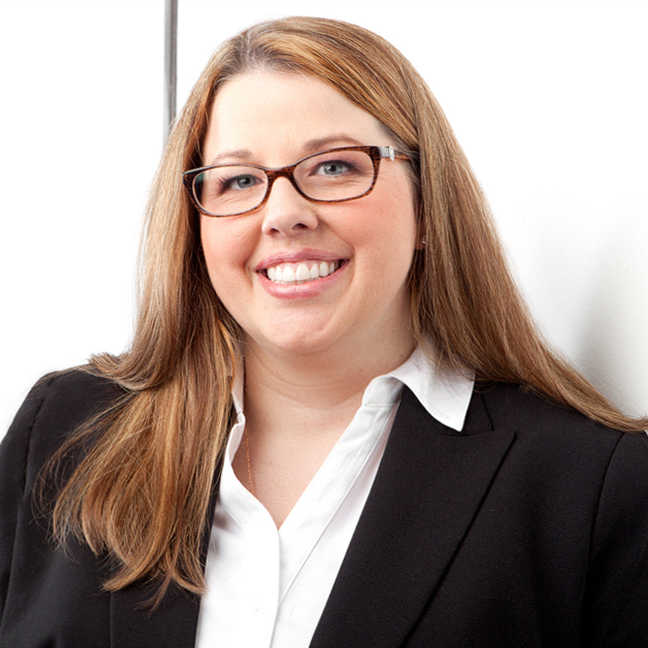





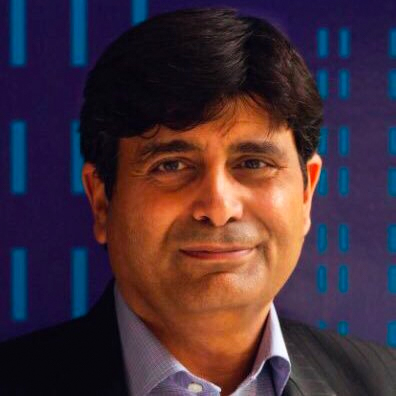
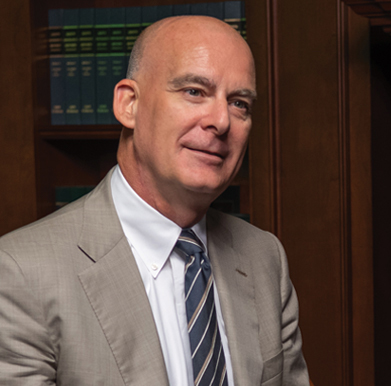
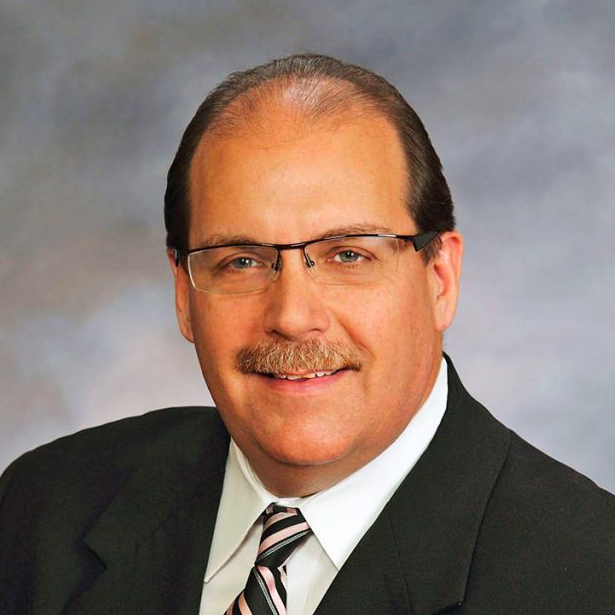
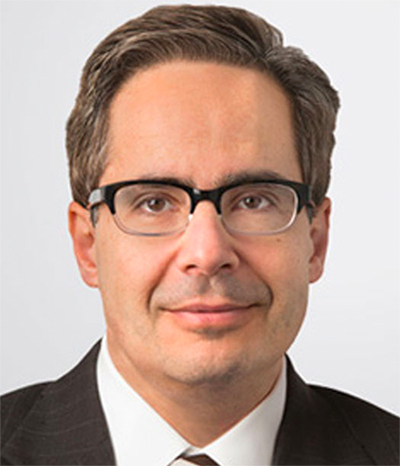
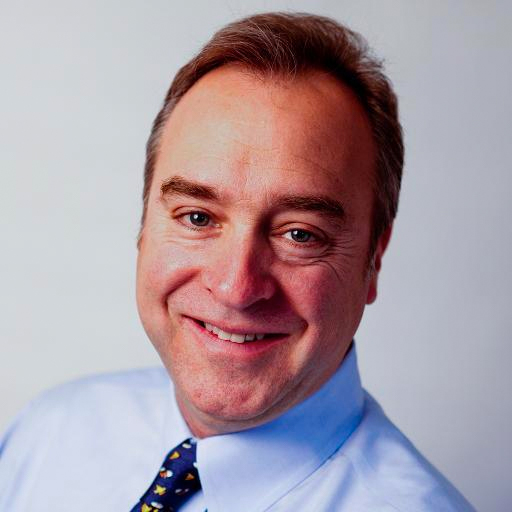
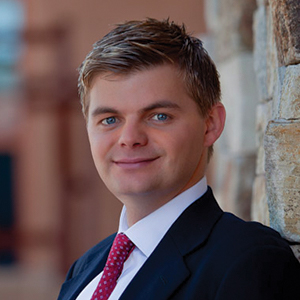











Recent Comments